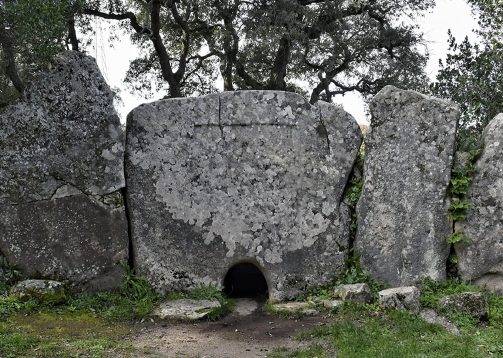The famous Tomb of the Giants in the “Pascareddha” locality dates back to the 16th century B.C. and was used until the 10th century B.C. Nestled in a cork oak forest of ancient trees, the monument stands at the edge of the valley furrowed by the San Paolo River, from which it is only a few dozen meters away. The approximately 12-meter-long burial corridor is included beneath the large mound of earth and rubble that left in view only the set of twelve granite slabs of the roof.
It was through the removal of one of these that the bodies of the deceased were lowered into the tomb, accompanied by funeral rites in which the entire village community participated. Part of the ceremonials was the eating of ritual meals, with food and drink being offered to the deceased, which were placed in earthenware containers on the right side of the exedra. Such practices were to be repeated periodically in honor of the ancestors, whose intervention was invoked in this area, as reported by classical sources, through rites of incubation, the revealing sleep of prophecies and advice.









